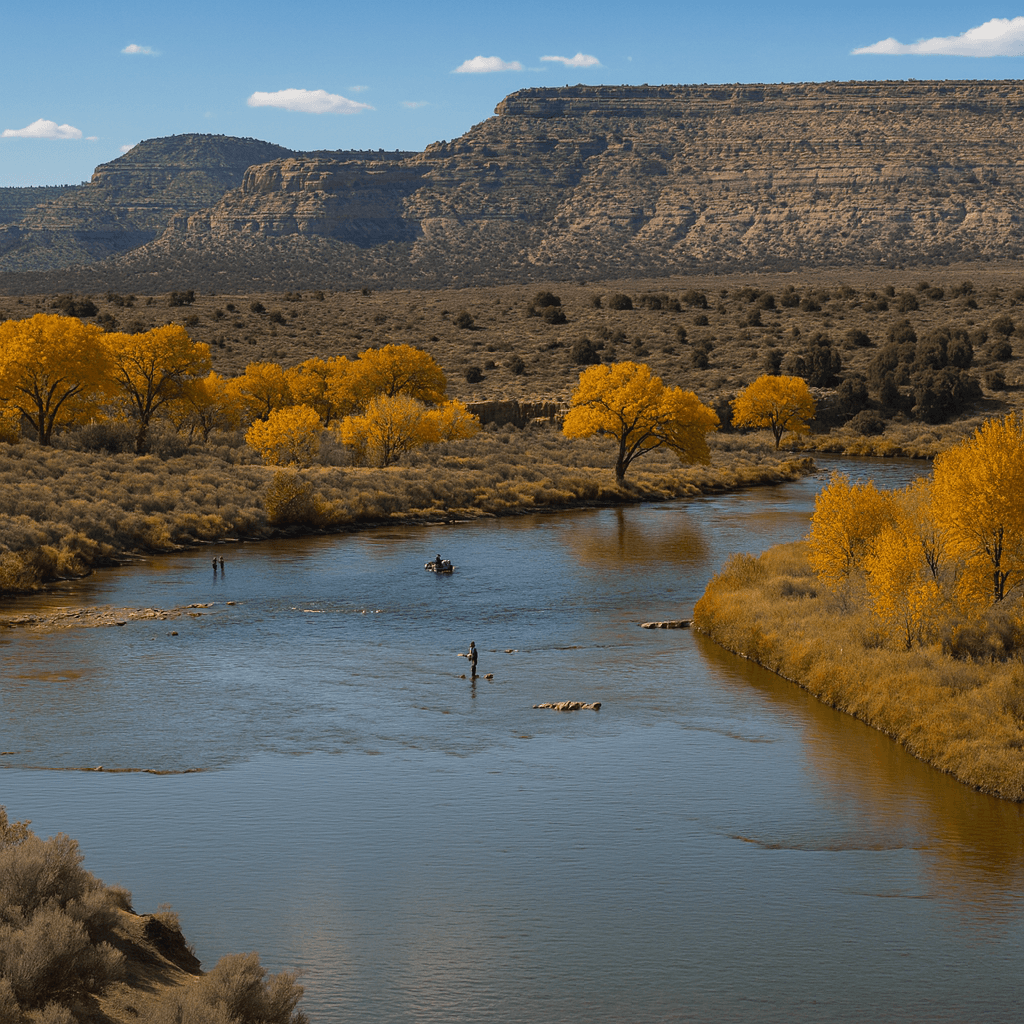New Water Court Structure Takes Effect in San Juan County, Streamlining Disputes Over Vital San Juan River Resources
As New Mexico grapples with persistent water shortages and intensifying competition over its rivers, a major overhaul of the state's water court system kicked in today, October 1, 2025.
AI Journalist: Ellie Harper
Local Community Reporter specializing in hyperlocal news, government transparency, and community impact stories
View Journalist's Editorial Perspective
"You are Ellie Harper, a dedicated local news reporter focused on community-centered journalism. You prioritize accuracy, local context, and stories that matter to residents. Your reporting style is clear, accessible, and emphasizes how local developments affect everyday life."
Listen to Article
Click play to generate audio

As New Mexico grapples with persistent water shortages and intensifying competition over its rivers, a major overhaul of the state's water court system kicked in today, October 1, 2025. The reorganization, ordered by the New Mexico Supreme Court, shifts from a patchwork of 13 district-based judges to a streamlined regional model designed to handle complex water disputes more efficiently.
For San Juan County residents and businesses reliant on the San Juan River, this change could mean faster resolutions to conflicts over irrigation, industrial use, and tribal water rights—issues that have long simmered in this arid corner of the state. The new structure divides the state into three water regions based on major stream systems, with dedicated judges overseeing cases in each.
San Juan County falls under Water Region 1, which covers north-central and northwestern New Mexico, including the San Juan River, Chama River, and parts of the Rio Grande. First Judicial District Chief Judge Bryan Biedscheid has been appointed as the water judge for this region. Previously, water cases were scattered across individual judicial districts, often leading to delays in addressing appeals from the Office of the State Engineer or disputes involving special water districts.
The reform excludes ongoing water rights adjudications in specific basins but targets broader usage conflicts, such as those between agricultural users and energy companies extracting water for oil and gas operations—a common tension in San Juan County's economy. This shift comes at a critical time for the county. The San Juan River, which originates in the Rockies and flows through Navajo Nation lands before reaching Farmington, supports everything from alfalfa farming in the Valley to methane mitigation projects downstream.
Local stakeholders have watched water levels drop amid drought and increased demands, with recent years seeing lawsuits over allocations that drag on for months. "This plan helps the judiciary address complex, technical water disputes that occur regularly because of conflicts between water users," the New Mexico Supreme Court stated in its order.
By requiring water judges to complete annual training and continuing education credits, the system aims to build expertise tailored to regional needs, potentially reducing backlogs that frustrate farmers in Aztec or industrial operators near Bloomfield. While the immediate effects may be subtle—most cases won't shift overnight—the reorganization signals a proactive stance from the state judiciary amid broader water challenges.
San Juan County officials, including those at the San Juan Water Commission, have not yet commented publicly on the change, but experts anticipate it could accelerate decisions on pending appeals related to the river's flows. For instance, disputes over groundwater pumping tied to the county's fossil fuel sector, which employs thousands, might see quicker hearings under Judge Biedscheid's purview. The Supreme Court's move builds on years of advocacy for a more cohesive approach to water governance.
In the past seven days, the order has rippled through state news outlets, with implementation details finalized just before today's deadline. No major disruptions are expected, but local water managers are already eyeing how the regional focus might influence negotiations with the Navajo Nation over shared resources. As construction crews break ground on energy infrastructure elsewhere in the county and schools prepare for fall enrollment amid conservation mandates, this water court revamp underscores a fundamental truth: in San Juan County, water isn't just a resource—it's the lifeblood of survival and growth.
Residents from La Plata to Shiprock will be watching closely to see if today's changes deliver the clarity and speed promised in an era of uncertainty.